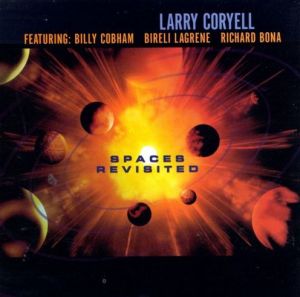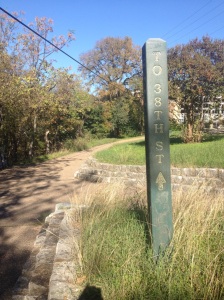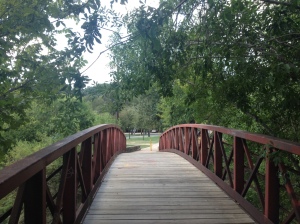Every so often, it’s important to put a fresh perspective on a situation of any complexity, whether it’s as local as how to improve a 1,600 square foot home or as far-reaching as what to do about the condition and outfitting of a nation’s military forces. During this campaign of 2016, the politics of our Republic and the condition of our nation appear to need as many hands on deck and as many valid ideas and relevant facts as can be brought to bear on the task. We are witnessing the effects of people spending years on ideological auto-pilot and under the spell of dog whistle politics, and the effects are pretty frightening. What’s more, we are seeing on a daily basis the outcome of a continuing experiment in which social media has become the driver of how people take in information.
I was once a high school English teacher for 7 years of my life, and despite leaving the hands-on (or minds-on) work of the classroom several years ago, I still consider myself at the core to be both an educator and a student. I believe that there are a multitude of experiences and facts out there that would quite simply amaze us and in some cases change our lives if we knew about them. Many of us are having these experiences for good and for worse every day. As a teacher, it was my job to connect the larger world outside the classroom with my ostensible lessons in language arts and make this information relevant to my students. An essential part of my job was prompting the students to think critically and learn about art and communication. I was the kind of teacher who pulled down my map quite often to talk about literally where in the world certain ideas came from.
At this moment in my country, I feel as if I’m witnessing battalions of the nation’s skeletons emerging from long hallways of closets, and while I am not going to engage in the old trope of saying that this is the end of the Republic or such hyperbole, I do affirm my disgust with the presence of so many voices whose open intent is to stake out the narrowest interests and most simplistic ideas with an utter lack of realism and any capacity to value opposing ideas of merit. I write at this moment because I see a dearth of plausibility—much less wisdom—in ideas espoused by too many, and I feel a duty to go beyond the accidental or what’s worse—the forbidden conversation and push for an active discussion that takes into account the complexity of our ideals, actions, and demographics.
I came of age from a political standpoint at the end of the 1980s, and I remember very well the pride and supportive tone with which my grandfather had spoken about the Reagan presidency while he was in office. Every campaign for the U.S. presidency since the early 90’s makes me think about the political conversations on which I grew up with my father and grandfather. My dad was a musician who was as socially liberal as you could be. He believed in the legalization and taxation of narcotics, a strong social safety net, a woman’s right to choose an abortion, and in the importance of recognizing and opposing racism and sexism in this country. My grandfather, an accountant and later a postal worker who went by the name Bud, was a fiscally conservative, devoted Catholic who was opposed to abortion and high taxes. As far as I know, my dad never voted in a single presidential election. Bud voted for Nixon, Ford, Reagan twice, and George H.W. Bush. His old, by-the-book Catholicism imbued in him a reverence for Erasmus and Thomas Aquinas on matters of philosophy and theology, and his pragmatic American conservatism had made him skeptical of almost any Democrat after Truman.

The conversations and arguments that we had across our three generations of views are now something of a legend in my memory. Every weekend was an opportunity to debate religion or politics with them in the “Main line” suburbs of Haverford Township, Pennsylvania. My dad often enjoyed watching me come armed with citations and analyses that often didn’t go over well with Bud. I remember in the early 1990s the indignant way in which Bud took issue with the authors Barlett and Steele for their criticism of trickle-down economics in their book entitled America: What Went Wrong? He bristled at their comparison of low tax rates for investment income in comparison with the higher rates for employee income. These conversations and disputes were formative for me, and I think that many of us have these revealing moments in our awareness of ideology and political history on a personal level. My wife has mentioned two conversations with her father that were bookends twelve years apart. The first talk was in the early 90s at the time of Operation Desert Storm. She remembers that the second conversation took place a decade later, during the run up to Operation Iraqi Freedom in 2003. For her, the rationales and objectives of these two wars seemed to be contradictory, and in making a case for the later military action, she felt that her father had changed some key assumptions and inadvertently made a case for neither of them.
Over the course of this past year, I’ve been making it a point to push the issue and have some of these conversations—in some cases with relatives and friends whom I see not so regularly since I live in Texas while most of my relatives are in Pennsylvania and New Jersey. My mom’s brother, a retired law enforcement officer, asked me a few months back what I think of the current political campaign. He was definitely kicking around the idea of voting for Trump because, in short, Clinton was “an Obama person.” He seemed to be bought into the general idea that President Obama was not a good leader, and I suspect he had some complaints about the Affordable Care Act. However, he asked me what I thought, and we actually had a good conversation. I acknowledged that some of Obama’s decisions did not work out that well in practice. When I mentioned the unhelpful crusade on the right against Planned Parenthood, my uncle acknowledged my point that it’s not a good plan to return to marginalizing women and putting them in a situation in which more back alley abortions take place. I don’t think that I changed his mind, but we negotiated some difficult issues and differing instincts in a very even-handed way.
I’ve been curious and attentive to political talk just about anywhere I’ve gone in the past year. During our trip to Italy earlier this year, we had a few conversations with native Italians who were definitely nonplussed by America’s flirtation with GOP nominee Trump. At the shore in Ventnor, NJ, I engaged the topic of crime and inner city violence with my mom’s husband, who has been just like a father to me since I was 5. We’ve talked politics and social issues all our lives, but I could tell that the conversation was making my mom and my older sister a bit anxious. George is a loyal Democrat (albeit a Reagan Democrat in the 1980s) and fairly centrist in his views. I was trying to bring the issue of federal drug policy into the conversation about crime and violence in cities like Philadelphia, Baltimore, and Miami. For George, this was beside the point. He was picturing night after night of newscasts back at their long time residence in Philly, in which a reporter would stand near an intersection in a long tan raincoat and describe a turf war or robbery-related murder, sometimes in multiples, and always disconnected from any overarching theme other than the idea of a bad neighborhood filled with irresponsibility and mayhem.

When I brought up the crime in those other cities, George said, “I care about Philadelphia; I don’t care about Miami or those other places” and later, “I care about where you are in Texas, not the rest of Texas.” I challenged him, but I get it. George is a father and a grandfather who wants to see things get better where it’s close to him and those for whom he cares. My point was that there’s a connection—a bigger picture that influences Texas, Philly, and Florida. I think that Federal drug policy and red-lining play a big role in this while George is skeptical. A couple of times during the conversation, I took a minute to assure George that I wasn’t attempting to tell him that he’s wrong or that what he’s saying was not relevant. I was simply trying to add something, searching for a way to broaden the conversation and bring it closer to a possible solution. I had no idea of what the goal of this talk was, but I wanted to talk anyway. I turned to my mom a few times to get her input, and the expression on her face said a great deal. Her combination of staunch liberalism and practical experience came through as she acknowledged a few of my points. Then I did something that may have surprised them—I said, “Thank you.” It reminded me of conversations that we used to have 15 or 20 years earlier.
My mother has certainly been a major influence on my political thinking. While I appreciated the outright leftism of my father, my mom was the one who has always voted and participated actively in the community. During the fall of 1991, a major political storyline was the U.S. Senate confirmation hearing for justice Clarence Thomas as nominee to SCOTUS. A significant piece of this politically charged event was Arlen Specter’s attack dog treatment of Professor Anita Hill during the hearings when she gave testimony as to inappropriate behavior by Thomas. In the following year, My mom decided to go beyond just pulling a lever in the voting booth, and she participated in the campaign of newcomer Lynn H. Yeakel, who was a surprise winner of the Democratic U.S. Senate primary election. My mom canvassed and raised money locally for Yeakel, who had been a founding member of the women’s fundraising and advocacy group named Women’s Way. I remember the energy and idealism of that campaign, and while Yeakel narrowly lost to Specter, it was an illustration for me of a real grass roots campaign as I watched my mom engaged in the process as an ordinary citizen who wanted to see better and fairer leadership.
Whether it was back in Southeastern Pennsylvania for much of my life or now in Texas, I’ve met and engaged with many people of different political persuasions. I once had an English department head where I taught who proudly claimed to be a radical rather than a liberal. He looked back fondly on the days of real teacher strikes in Philadelphia—not enjoying the prospect of the strike itself but rather the agency and unified action. At that same school I met a young social studies teacher who had and still has a passion for history and historical literacy. She is a conservative Italian-American and is married to a husband who is a Palestinian-American Catholic. I’ll never forget the flash of insight I had one day when talking politics with her and noting her views. I said, “I know what kind of conservative you are now! You think, like Patton did, at the end of World War II, that we should have told the Russians, ‘you’re next! We’re not going to divide Germany and give you control of half of it!'” She kind of smiled and said, “that’s right!” It’s conversations like those that have helped me to understand that every single person in this country is politically distinct, and in some way we’re all outnumbered. We have to make complicated choices about partnerships and provisional alliances.
These alliances can run the gamut from ironic to completely problematic. Not that long ago I learned that David Axelrod, architect of President Obama’s election campaign, had actually worked on the campaign of former Philadelphia mayor John Street. I enthusiastically voted for Republican candidate Sam Katz in two elections against Street. I and most of my family felt that Street was self-interested, corrupt, and possessed of a shameless political style. In the 2003 election rematch between the two men, Katz was doing fairly well in the polls, when a listening device was found in Street’s office. It turned out that the FBI had been investigating Democratic incumbent Street, and in a brilliantly sleazy, strategic play, Axelrod and co. turned this into a way to associate Katz with the highly unpopular (in Philadelphia) George W. Bush administration. The 2006 documentary film The Shame of a City tells the story of this bizarre campaign and the manipulation of local voter sentiment that propelled an unpopular mayor to a 16-point reelection win. I certainly can’t fault David Axelrod or Karl Rove for wanting to win elections, but I’m not going to condone dishonest tactics no matter which party is using them.

We have many friends and relatives going through their own unique processes of figuring out where they stand in the current election year. We recently spoke with some of my wife’s very good friends from high school who hail from North Dallas and now make their homes in Austin. One of these friends is an avid supporter of a well-regulated militia and the right to bear arms, and in recent years he has felt more and more politically at home in the Libertarian Party. We had a great conversation with him and his wife in which we assured him with good humor that we Democrats do not have a plan or a desire for wholesale gun confiscation. We talked about the hands-off philosophy of the Libertarian Party—including on the topic of women’s reproductive rights, and in a very cogent way, our friend made the case from a very centrist point of view why it was essential not to revoke a woman’s ability to make this decision. He’s not the only one we’ve talked to who is thinking third party. I had a useful conversation on Facebook of all places, with a younger cousin who lives in Virginia and is also supporting and voting for Johnson. The former New Mexico governor’s pro-choice stance was a surprise to her when I mentioned it. Most of the time social media can be a disaster in terms of political discussion. In this case, with the right sensibility, I learned about who she was supporting and why, and she learned an important unknown detail about her candidate. We cannot and should not try to talk politics with everyone, but we need to do it at times with those in whom we have an investment—even when there’s a big risk of discomfort.
I want to go back to one day in 1994 for a moment. I remember being at my grandparents’ house with my dad and Bud when I learned something that really surprised me. I vaguely remember Newt Gingrich making a speech on television, and some political talk brewing between me and my grandfather. As if in a refutation of something I’d implied, Bud mentioned very casually but pointedly that he had voted for Bill Clinton in the ’92 election. I was genuinely amazed. I remember saying to my dad a little afterward, “I can’t believe it…he voted for Clinton!?” My dad caught the significance of what I was focusing on, and he commented that his father had always maintained his own way of doing things. Even to this day, I continue to be surprised at this strategic and understated political choice of variance from decades of his thinking. It turned out that this last presidential election in which he would be alive to vote was my first vote. Our debates within the family would never be quite as challenging and rich after we lost him in 1995. I’m glad that Bud was spared having to live through events like the September 11th attacks. I believe that he would have been exasperated at this insulting campaign by Trump as nominee of the party that he strongly favored. I think that he would have seen it as a vacant exercise of ego. Either way, I still wish I could have one more debate with him and with my dad as well.
These times have made me ask questions about the fundamental conditions and political assumptions in this country. My wife has very close friends who have worked in politics in the District of Columbia, and their insights and direct knowledge of the process have been particularly interesting. I’ve seen the wave of support for Bernie Sanders, and I want to ask the Sanders supporters, will you follow through on a long term effort to advocate for what he championed? Will you vote in mid-term, presidential, and local elections for credible candidates and work toward incremental progress when “revolutionary” change is unlikely? I wonder when religiosity and evangelicalism will stop being such a central driver of Republican party assumptions. When I look at my adopted home city of Austin, I wonder how long we can pollute the atmosphere and degrade the air quality with this gigantic and growing squadron of gas-guzzling cars on the road. I’d like to see less of an emphasis on thinly veiled partisan issues such as in-person voter fraud and more attention to rewriting our narcotics laws and reforming our criminal justice policies. We cannot incarcerate our way to a better country.
Ultimately, our political situation and the risk of electing a Trump represents a failure of education. We haven’t taught our citizens how to identify and rebuff flimsy emotional appeals. We are demonstrating a national failure of critical thinking. The situation may not portend the end of the Republic, but we still need to do a lot of work. Part of this work is talking about politics with realism, sincerity, and the willingness to acknowledge when the other side is right. I admit that I’m not open-minded about some topics. I have believed firmly since 2004 that gay marriage was constitutionally supported and that it was an inevitable and appropriate right in this country. I won’t be changing my mind on that topic just as I won’t change my opinion on the institution of slavery and the harm caused by Jim Crow laws. However, if anyone has a reasonable case to make on any of our emerging national or local issues, I’m open to having a conversation. To everyone who has talked politics with me over the years, thanks for sharing your experiences as well as your opinions. I believe that communication is essential to maintaining our well-being and our freedoms.











































